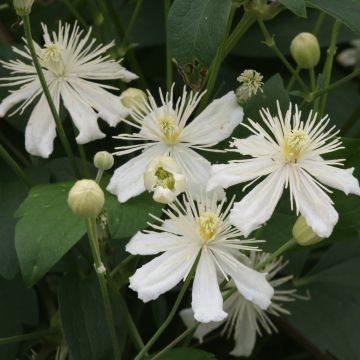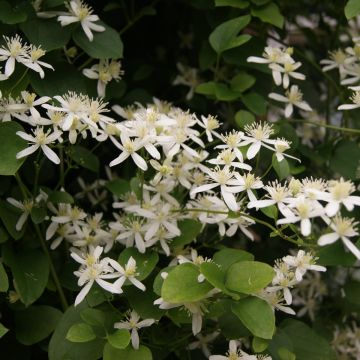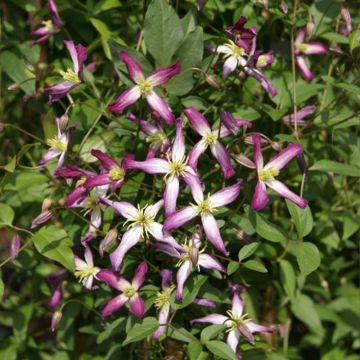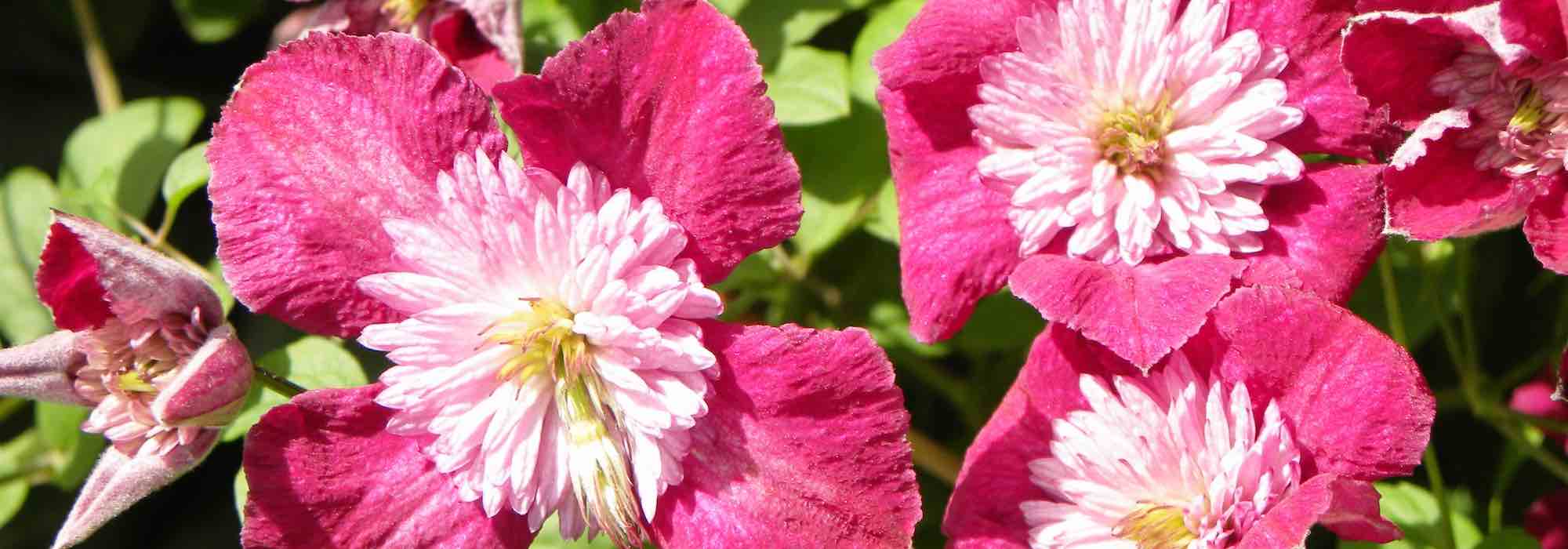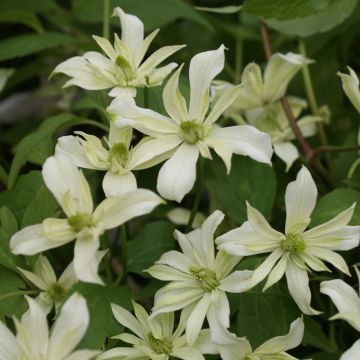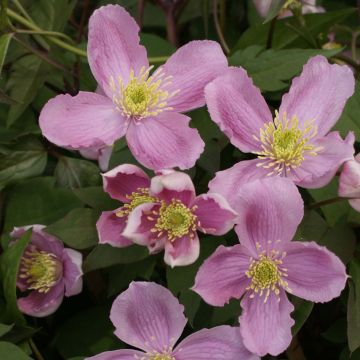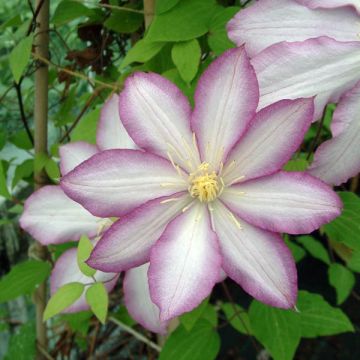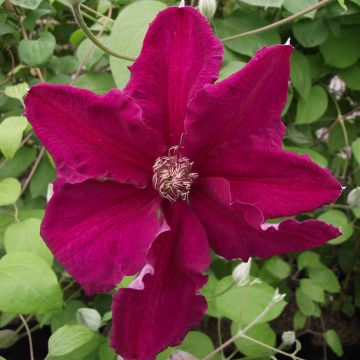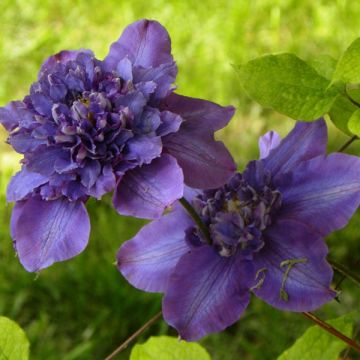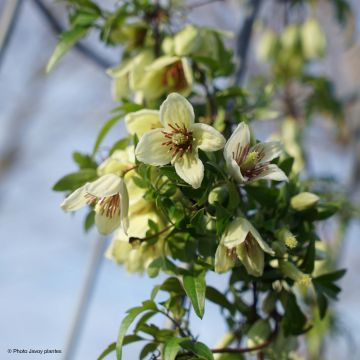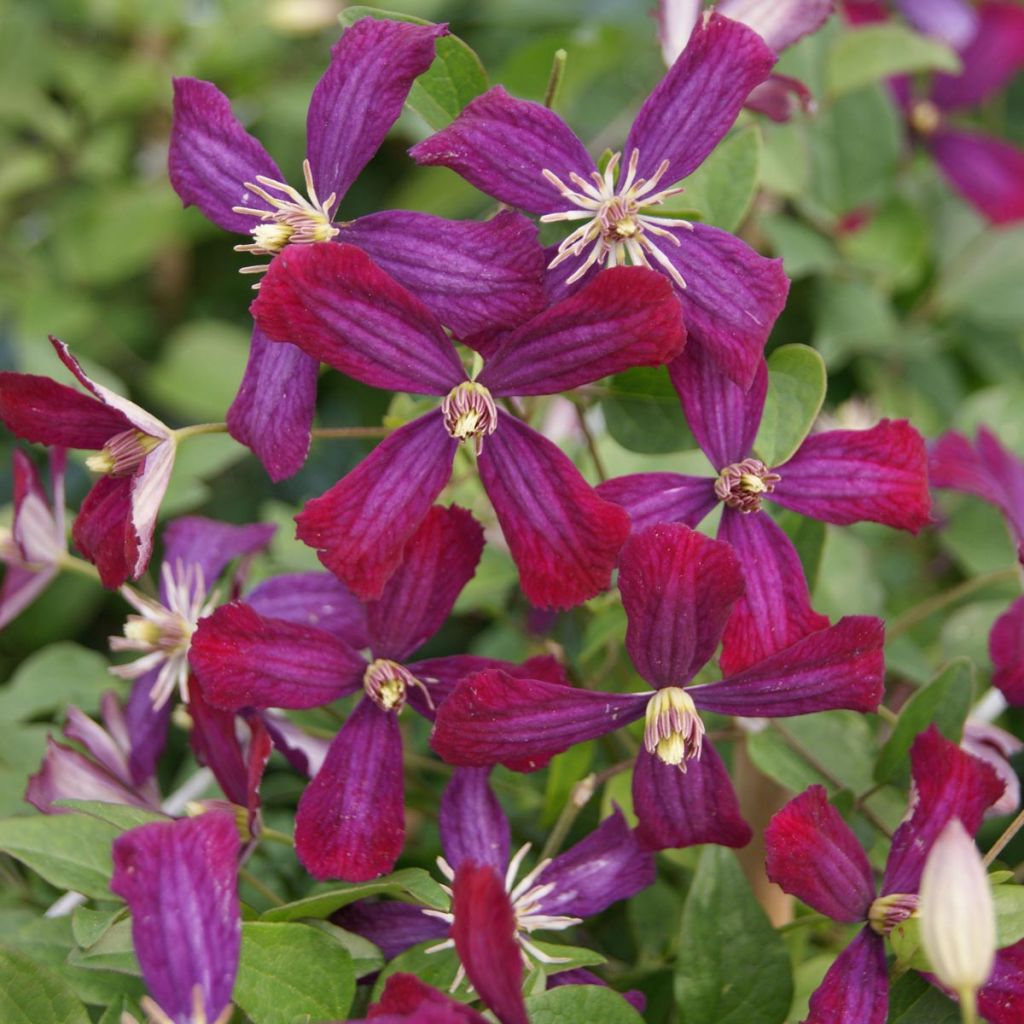

Clematis flammula Sweet Summer Love
Clematis flammula Sweet Summer Love
Clematis flammula Sweet Summer Love
Clematis 'Sweet Summer Love'
Dry, stony soil, heatwave: one of the clematis dried up, maybe it will come back this autumn.
Nanou, 11/10/2024
Special offer!
Receive a €20 voucher for any order over €90 (excluding delivery costs, credit notes, and plastic-free options)!
1- Add your favorite plants to your cart.
2- Once you have reached €90, confirm your order (you can even choose the delivery date!).
3- As soon as your order is shipped, you will receive an email containing your voucher code, valid for 3 months (90 days).
Your voucher is unique and can only be used once, for any order with a minimum value of €20, excluding delivery costs.
Can be combined with other current offers, non-divisible and non-refundable.
Home or relay delivery (depending on size and destination)
Schedule delivery date,
and select date in basket
This plant carries a 6 months recovery warranty
More information
We guarantee the quality of our plants for a full growing cycle, and will replace at our expense any plant that fails to recover under normal climatic and planting conditions.
Would this plant suit my garden?
Set up your Plantfit profile →
Description
Clematis flammula 'Sweet Summer Love' is a recent award-winning cultivar. The flowers are small, single, and pleasantly scented, with purple-violet petals that are beautifully complemented by the white reverse and stamens. The abundance of these flowers transforms the plant into a colourful mist. The flowering occurs early in the season and lasts a long time. It is ideal when planted alongside a bush, in a container, or even as a ground cover.
Clematis belong to the Ranunculaceae family. Clematis flammula, from which this variety originates, is found mainly around the Mediterranean and occasionally in northern regions. 'Sweet Summer Love' is a beautiful variant with remarkable colours and abundant flowering. However, its hardiness is moderate (maximum -15°C (5°F)), and it may freeze in the coldest regions when winters are severe. It is a semi-woody, climbing perennial plant that can reach a height of 2 to 3m (7 to 10ft), with a spread of 1m (3ft).
This clematis bears small, fragrant, star-shaped flowers measuring 3 to 4cm (1 to 2in) in diameter. They appear on new growth from June to September. The flowers have 4 purple-violet tepals with white reverses. The centre of the flower is adorned with white stamens and pink anthers. The flowering is followed by decorative silvery-grey feathery fruits that persist until winter. The leaves are single and entire, with a shiny dark green colour. This clematis clings to supports or host plants using petioles transformed into tendrils.
Plant your clematis alongside roses to hide unsightly walls or to adorn a pergola, a fence, or an old tree. This genus is rich in diversity, with varieties available in all colours, shapes, and sizes. This variety is of moderate size and will be perfect both in the garden and in large containers. Its numerous tendrils allow it to climb anywhere, so consider using it to cascade in a warm rockery. These lovely climbers add a romantic and bohemian touch to your garden with minimal maintenance.
Clematis flammula Sweet Summer Love in pictures
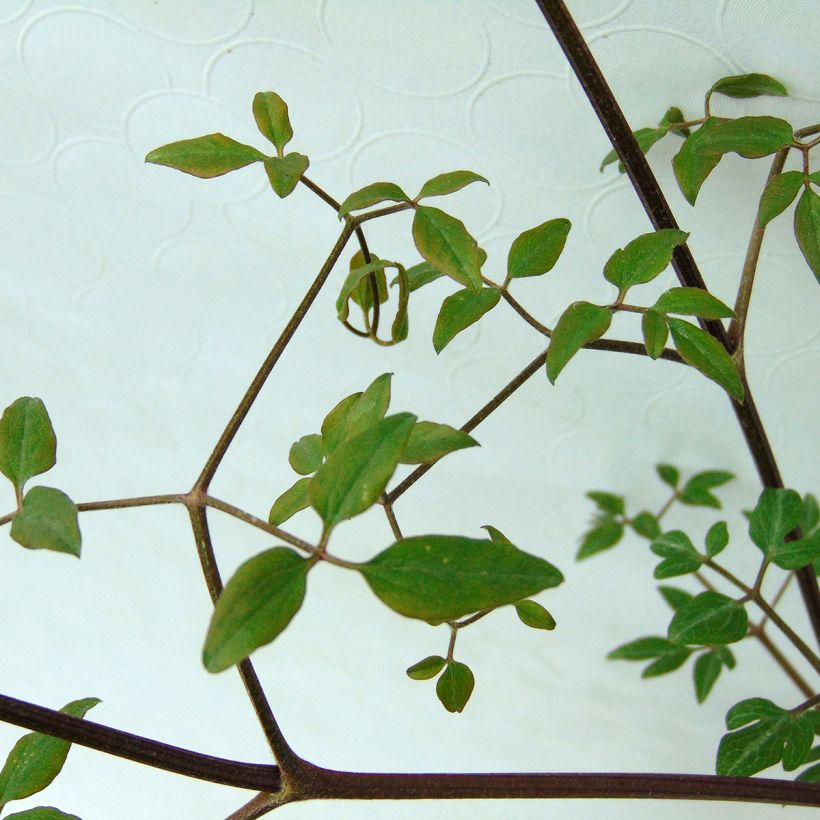

Plant habit
Flowering
Foliage
Botanical data
Clematis
flammula
Sweet Summer Love
Ranunculaceae
Clematis 'Sweet Summer Love'
Cultivar or hybrid
Other Clematis Flammula
View all →Planting and care
Clematis 'Sweet Summer Love' will appreciate a sunny or lightly shaded position under a tree. Plant it in fertile, humus-bearing, well-drained soil, shading the roots and base of the stem (with a flat tile, for example). The clematis wilts in excessively moist soil. Work the soil to a depth of 20cm (8in), and lighten it with good compost and coarse sand. Position the plant and cover the root ball with 3cm (1in) of soil. After planting, prune the clematis shoots to about 30cm (12in) above a pair of buds. Water generously and regularly during the first few weeks. Do not overwater as this can lead to the development of a fungus at the collar.
Mulch all clematis in February with garden compost or well-rotted manure, avoiding direct contact with the stems.
Train the stems, without squeezing them, until the plant can cling on its own. Clematis also like to grow freely on neighbouring plants.
After a few years, cover the base of your climbing clematis with a small mound of soil, to reduce the risk of wilting, while promoting the emergence of vigorous shoots from the stump.
Voles and grey worms can attack clematis and devour the stems. Aphids and greenhouse whiteflies are also potential pests.
As its hardiness is moderate, protect the base in winter.
Planting period
Intended location
Care
Planting & care advice
-
, onOrder confirmed
Reply from on Promesse de fleurs
Similar products
Haven't found what you were looking for?
Hardiness is the lowest winter temperature a plant can endure without suffering serious damage or even dying. However, hardiness is affected by location (a sheltered area, such as a patio), protection (winter cover) and soil type (hardiness is improved by well-drained soil).

Photo Sharing Terms & Conditions
In order to encourage gardeners to interact and share their experiences, Promesse de fleurs offers various media enabling content to be uploaded onto its Site - in particular via the ‘Photo sharing’ module.
The User agrees to refrain from:
- Posting any content that is illegal, prejudicial, insulting, racist, inciteful to hatred, revisionist, contrary to public decency, that infringes on privacy or on the privacy rights of third parties, in particular the publicity rights of persons and goods, intellectual property rights, or the right to privacy.
- Submitting content on behalf of a third party;
- Impersonate the identity of a third party and/or publish any personal information about a third party;
In general, the User undertakes to refrain from any unethical behaviour.
All Content (in particular text, comments, files, images, photos, videos, creative works, etc.), which may be subject to property or intellectual property rights, image or other private rights, shall remain the property of the User, subject to the limited rights granted by the terms of the licence granted by Promesse de fleurs as stated below. Users are at liberty to publish or not to publish such Content on the Site, notably via the ‘Photo Sharing’ facility, and accept that this Content shall be made public and freely accessible, notably on the Internet.
Users further acknowledge, undertake to have ,and guarantee that they hold all necessary rights and permissions to publish such material on the Site, in particular with regard to the legislation in force pertaining to any privacy, property, intellectual property, image, or contractual rights, or rights of any other nature. By publishing such Content on the Site, Users acknowledge accepting full liability as publishers of the Content within the meaning of the law, and grant Promesse de fleurs, free of charge, an inclusive, worldwide licence for the said Content for the entire duration of its publication, including all reproduction, representation, up/downloading, displaying, performing, transmission, and storage rights.
Users also grant permission for their name to be linked to the Content and accept that this link may not always be made available.
By engaging in posting material, Users consent to their Content becoming automatically accessible on the Internet, in particular on other sites and/or blogs and/or web pages of the Promesse de fleurs site, including in particular social pages and the Promesse de fleurs catalogue.
Users may secure the removal of entrusted content free of charge by issuing a simple request via our contact form.
The flowering period indicated on our website applies to countries and regions located in USDA zone 8 (France, the United Kingdom, Ireland, the Netherlands, etc.)
It will vary according to where you live:
- In zones 9 to 10 (Italy, Spain, Greece, etc.), flowering will occur about 2 to 4 weeks earlier.
- In zones 6 to 7 (Germany, Poland, Slovenia, and lower mountainous regions), flowering will be delayed by 2 to 3 weeks.
- In zone 5 (Central Europe, Scandinavia), blooming will be delayed by 3 to 5 weeks.
In temperate climates, pruning of spring-flowering shrubs (forsythia, spireas, etc.) should be done just after flowering.
Pruning of summer-flowering shrubs (Indian Lilac, Perovskia, etc.) can be done in winter or spring.
In cold regions as well as with frost-sensitive plants, avoid pruning too early when severe frosts may still occur.
The planting period indicated on our website applies to countries and regions located in USDA zone 8 (France, United Kingdom, Ireland, Netherlands).
It will vary according to where you live:
- In Mediterranean zones (Marseille, Madrid, Milan, etc.), autumn and winter are the best planting periods.
- In continental zones (Strasbourg, Munich, Vienna, etc.), delay planting by 2 to 3 weeks in spring and bring it forward by 2 to 4 weeks in autumn.
- In mountainous regions (the Alps, Pyrenees, Carpathians, etc.), it is best to plant in late spring (May-June) or late summer (August-September).
The harvesting period indicated on our website applies to countries and regions in USDA zone 8 (France, England, Ireland, the Netherlands).
In colder areas (Scandinavia, Poland, Austria...) fruit and vegetable harvests are likely to be delayed by 3-4 weeks.
In warmer areas (Italy, Spain, Greece, etc.), harvesting will probably take place earlier, depending on weather conditions.
The sowing periods indicated on our website apply to countries and regions within USDA Zone 8 (France, UK, Ireland, Netherlands).
In colder areas (Scandinavia, Poland, Austria...), delay any outdoor sowing by 3-4 weeks, or sow under glass.
In warmer climes (Italy, Spain, Greece, etc.), bring outdoor sowing forward by a few weeks.































